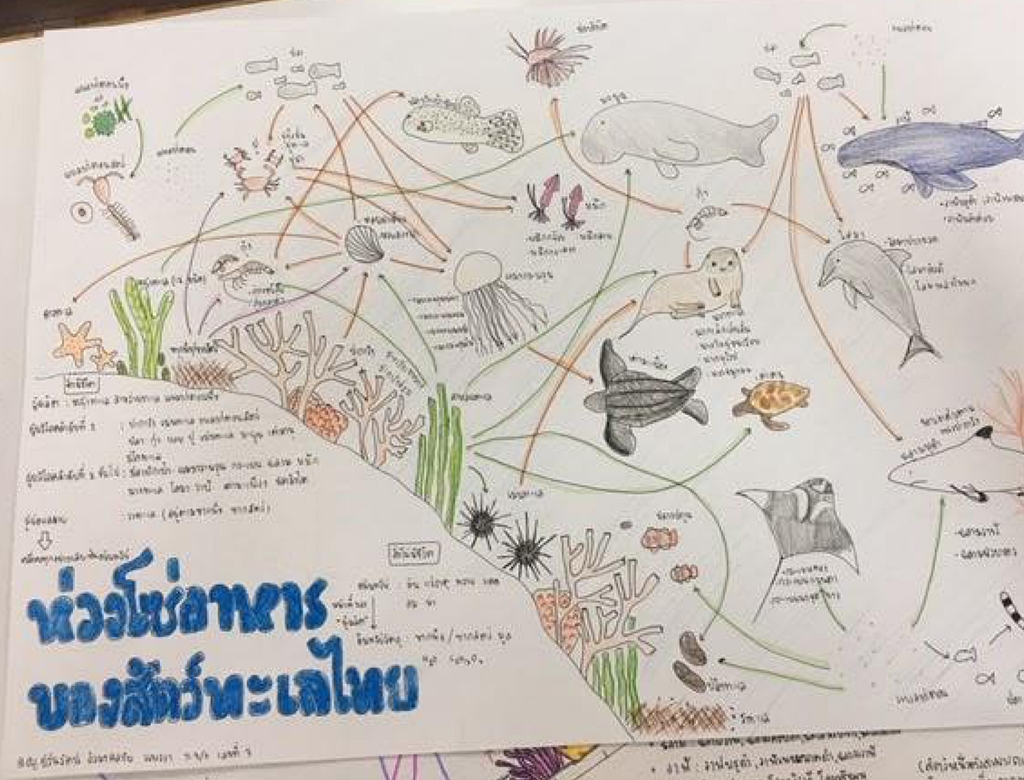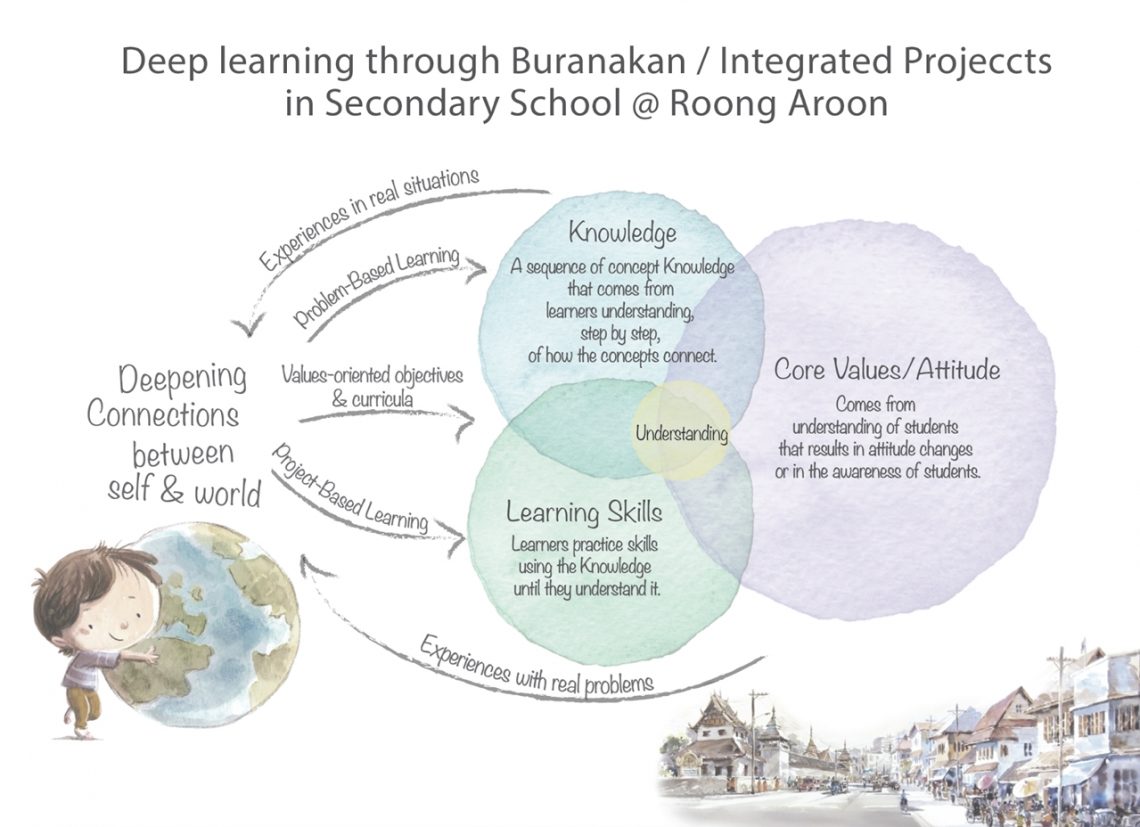
Buranakan in Grade 9: Deep Learning through Integrated Project Work
Facilitating Grade 9, Day by Day
Much of the deep learning that happens in the integrated Buranakan projects occurs as a result of careful and well-planned facilitation, as teachers create workshop-like settings and lesson plans for helping support the specific topics that students choose. For more strategies about facilitating in ways that students learn by sharing and giving feedback in differentiated ways, click to An Example of Facilitating Buranakan: Windows into a Grade 9 Classroom.
Teacher Mod explains a constructivist approach to learning:
The key is when students construct their knowledge by themselves after they have a lot of information that their friends are sharing, and their own experience, own knowledge that they each prepare to share, so they construct the new knowledge, a new idea, new vision.
Students use their expanding knowledge and skills to deepen
their connection to the topics as they work on holistic tasks.
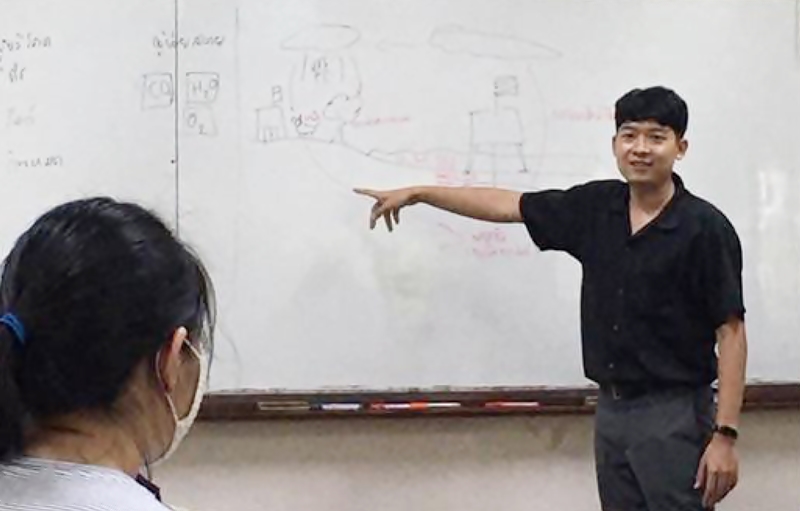
learn how to explain their own thinking about complex topics.
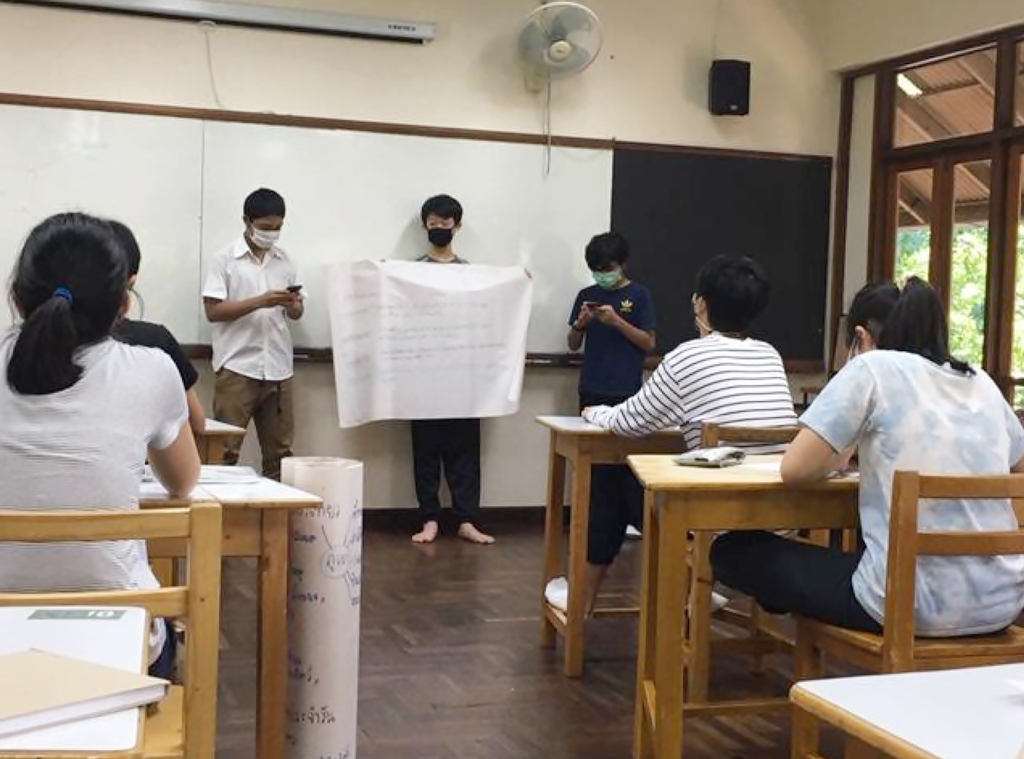
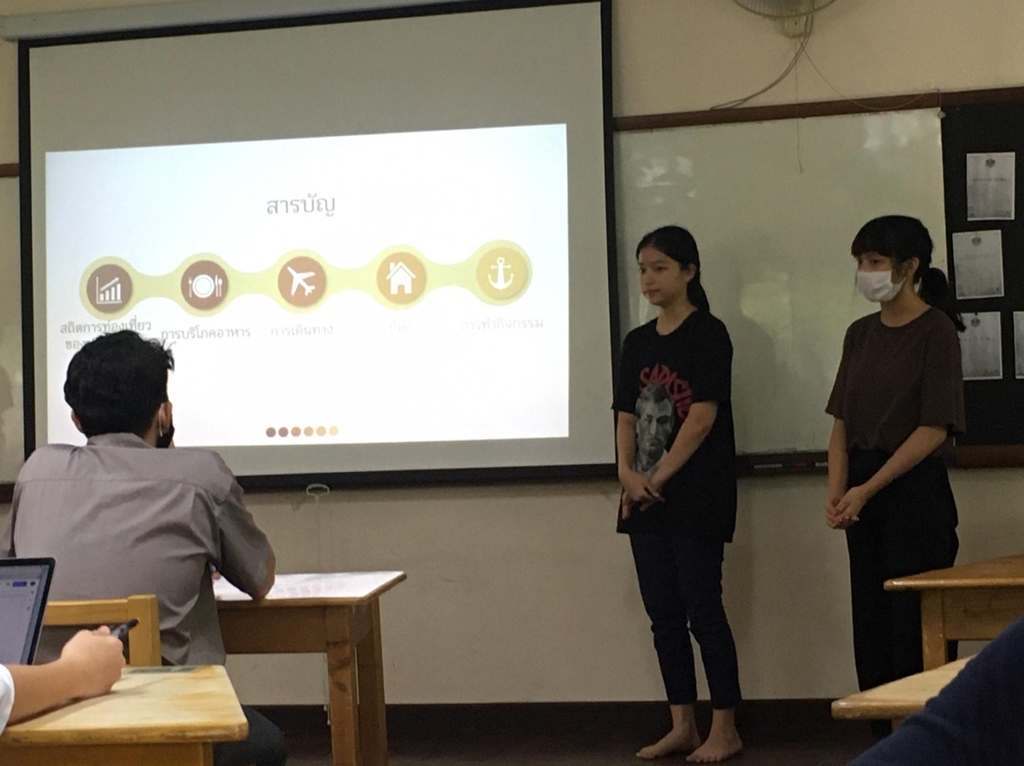
student team, depending on individuals’ levels, motivations, and needs.
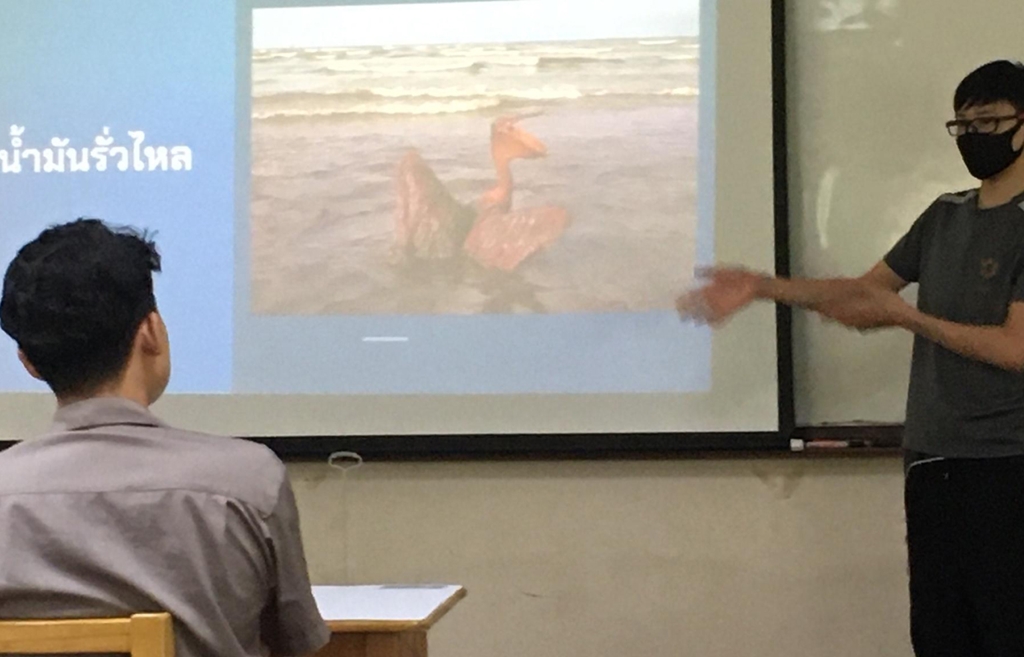
|
How is the learning deepened within integrated projects? Cru Pu explains with an example of students choosing to study wildfires for a term project. Merely watching the news alone is not nearly enough for a student to see deeply into the many dimensions of the problem. Thinking from the learner’s perspective, she elaborates: If you learn by being concerned about that more, it becomes your project, and you want to do more about that, so you have to go deeper inside the information. You need to connect with organizations to talk about that, with real people, to discuss about that, to answer in what you want to know. The deeper path of learning can give you more deeper knowledge, so you feel much about that. … And that is the real knowledge because in some situations, sometimes, we can see in the news it’s very severe, but it’s not in the real situation. Or even the news may say, you don’t need to worry about that, we can handle that, but [it turns out differently]. So we have to get inside information…You go deeper, deeper, deeper, to dig out knowledge by yourself. |
Do all these factors add up to student successes in what and how students are learning with sustained interest and engagement for the whole term? Are these factors helping students to learn more holistically? How can we know? What about the evidence of success as seen from the eyes of students?
